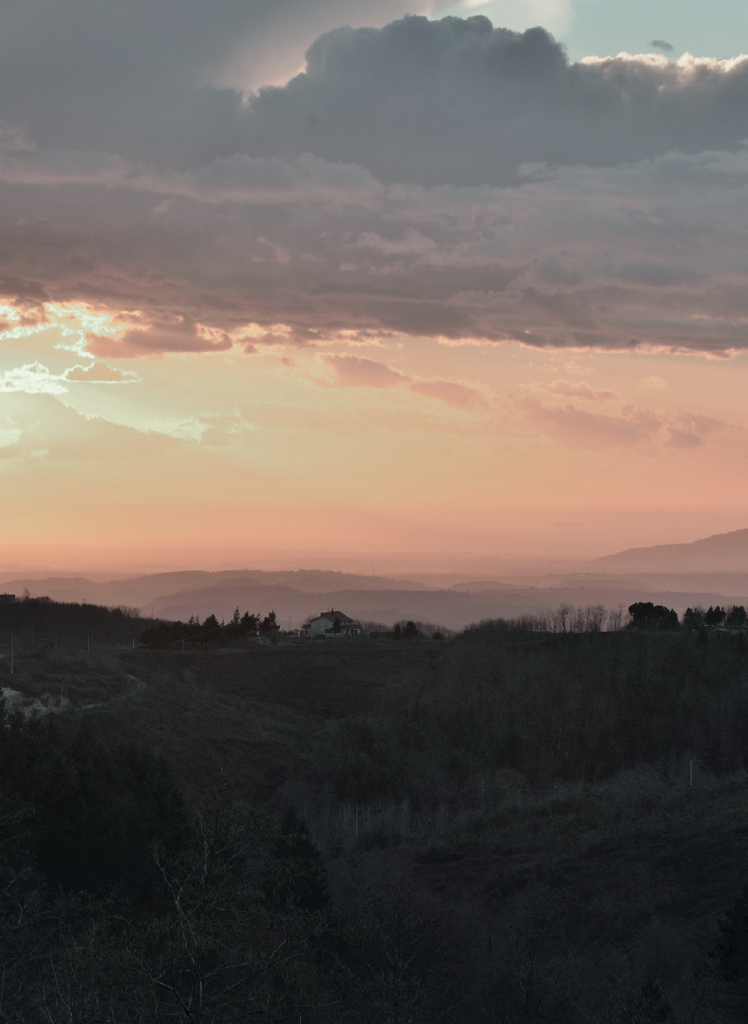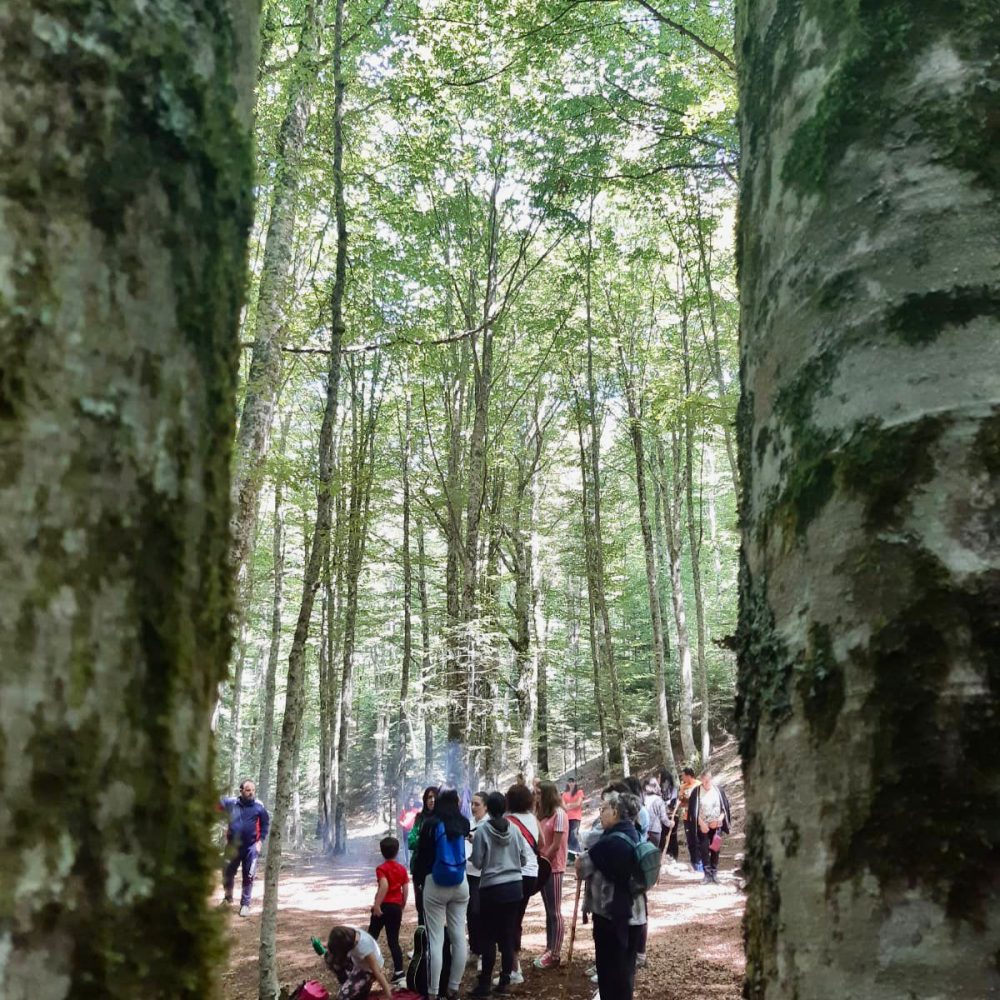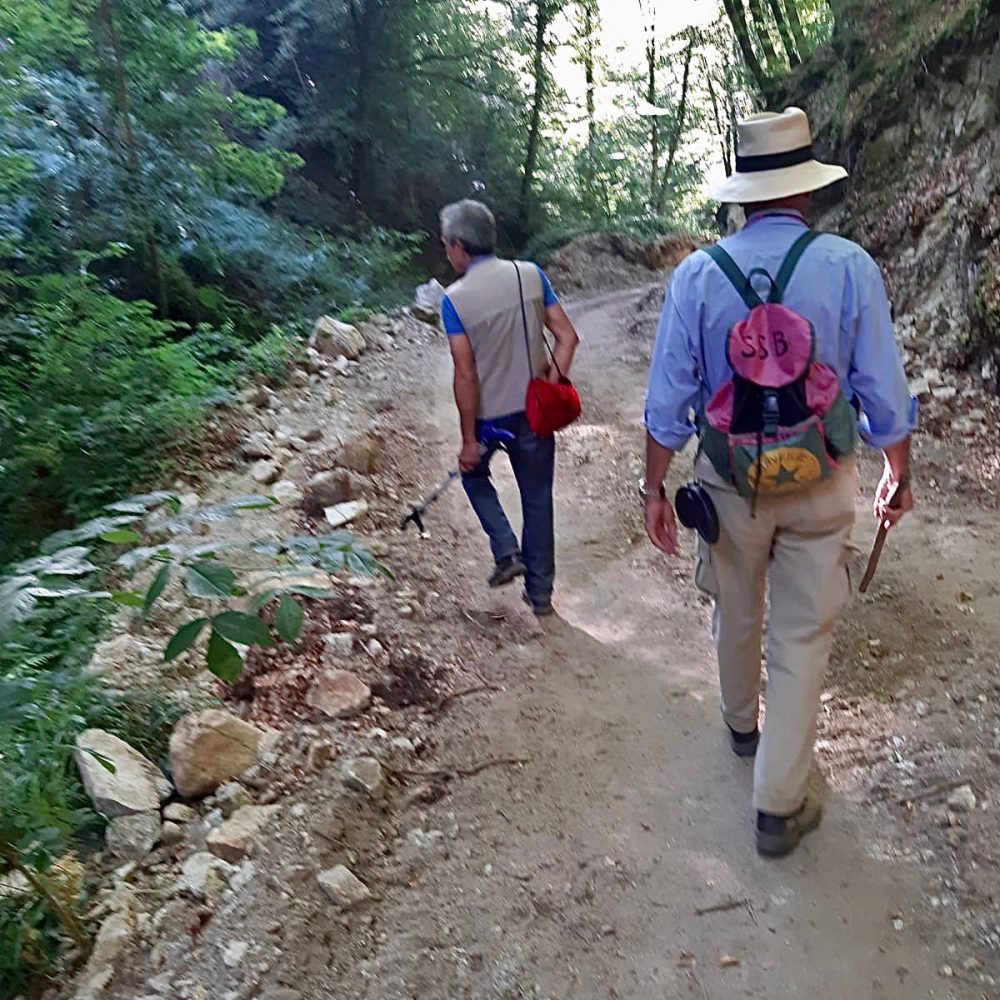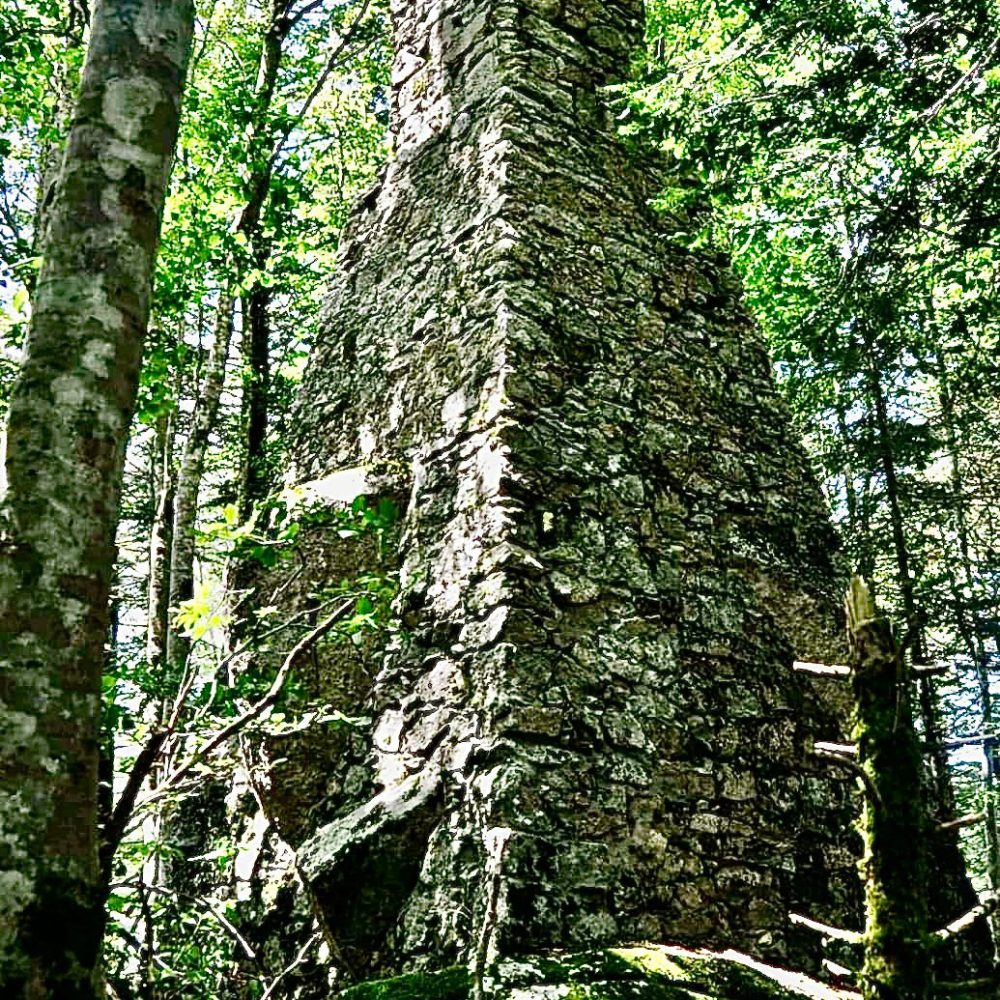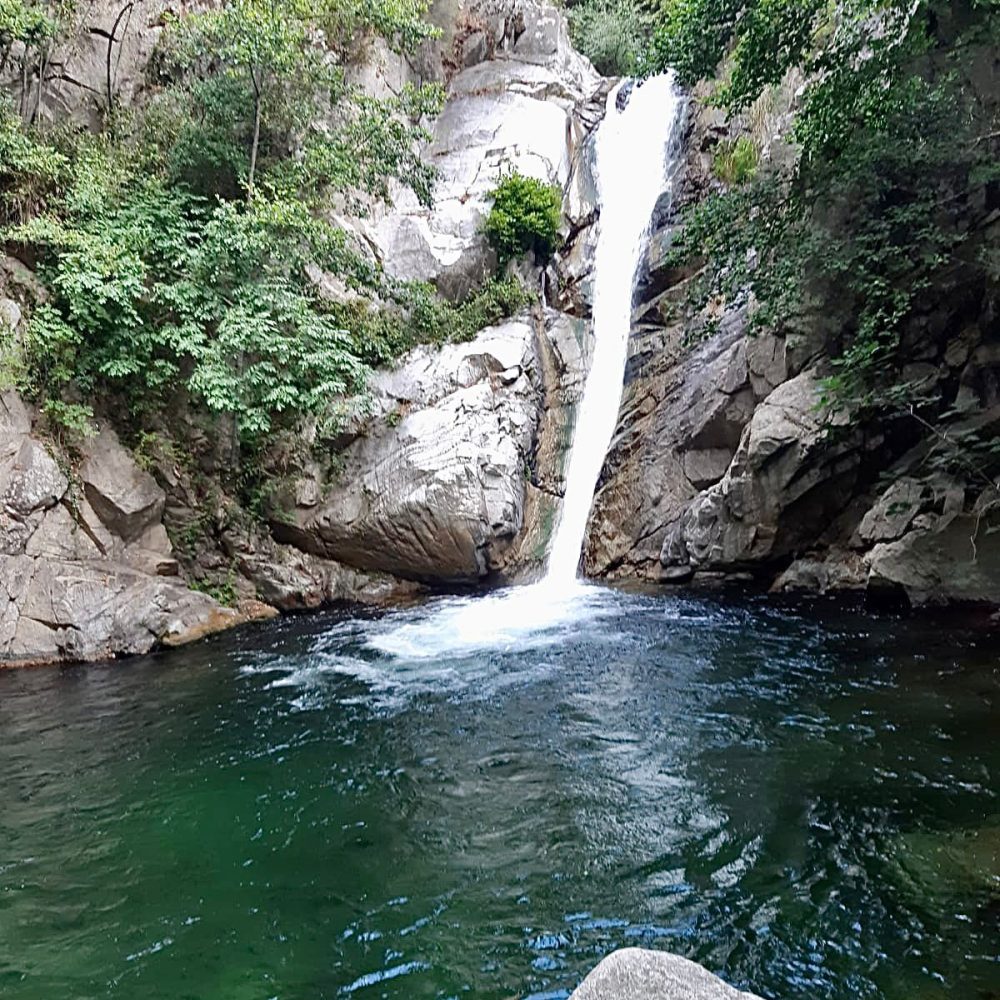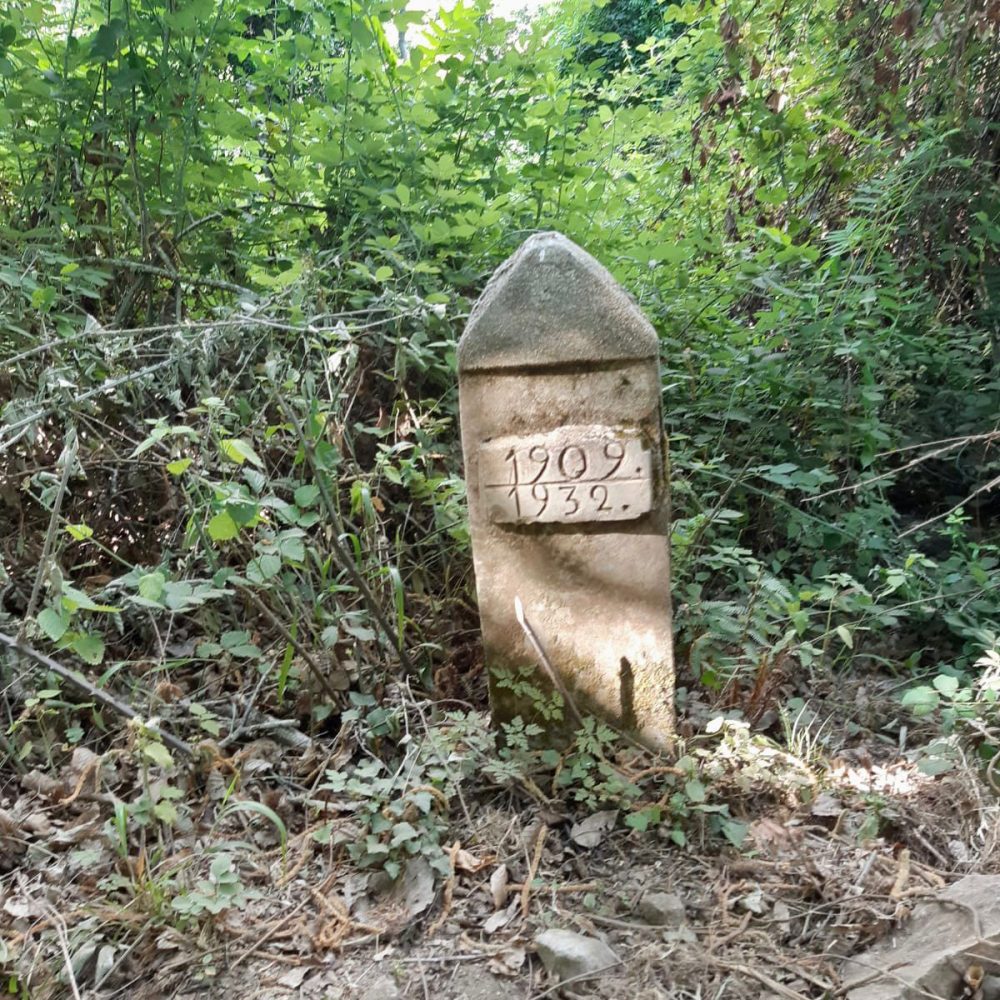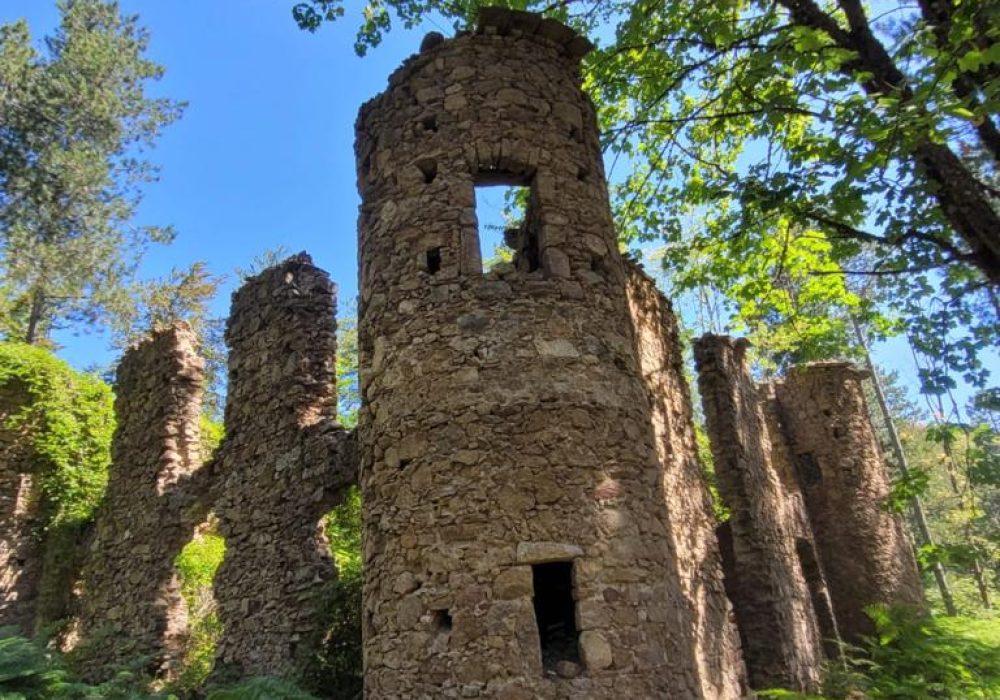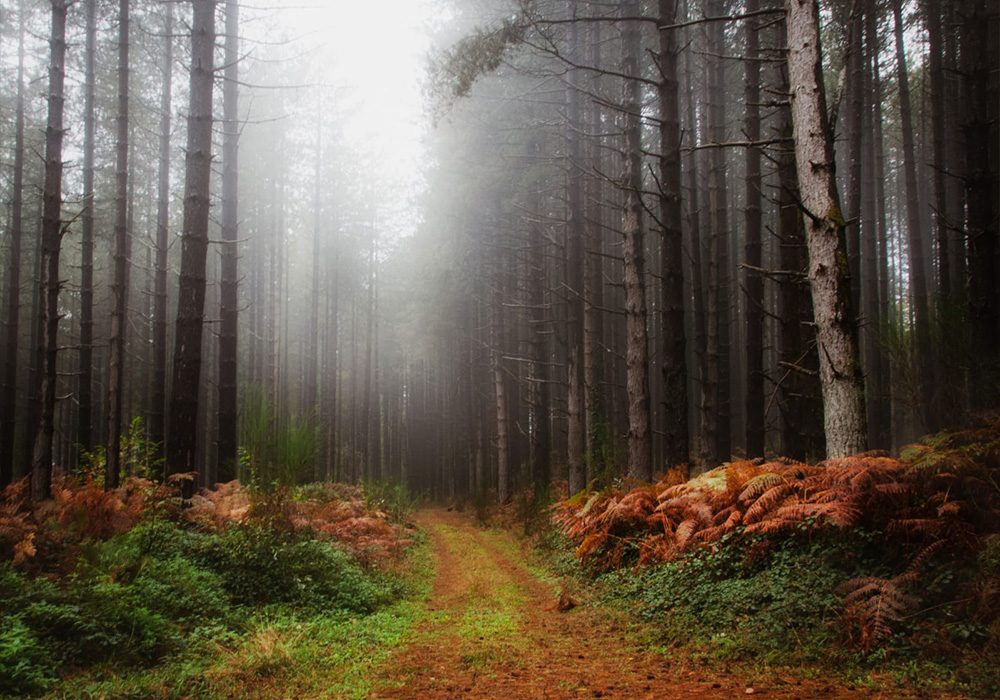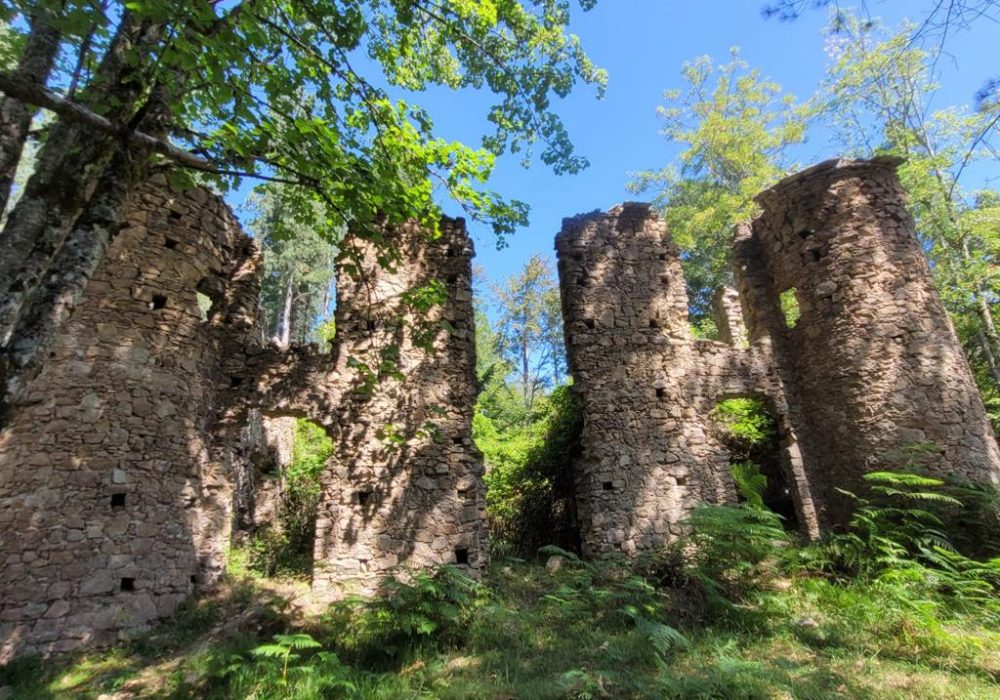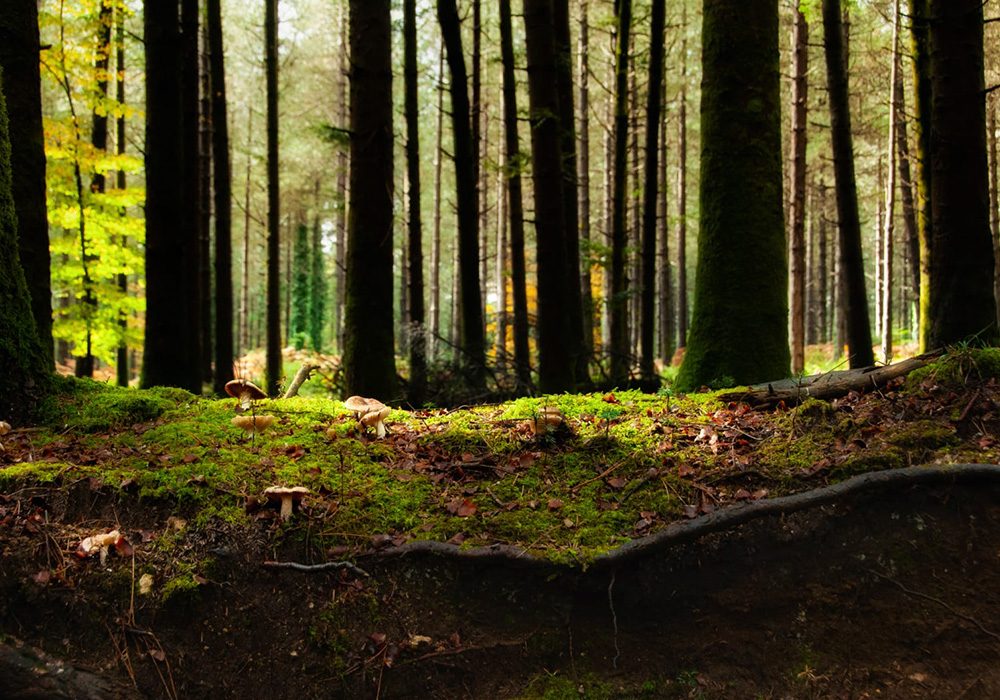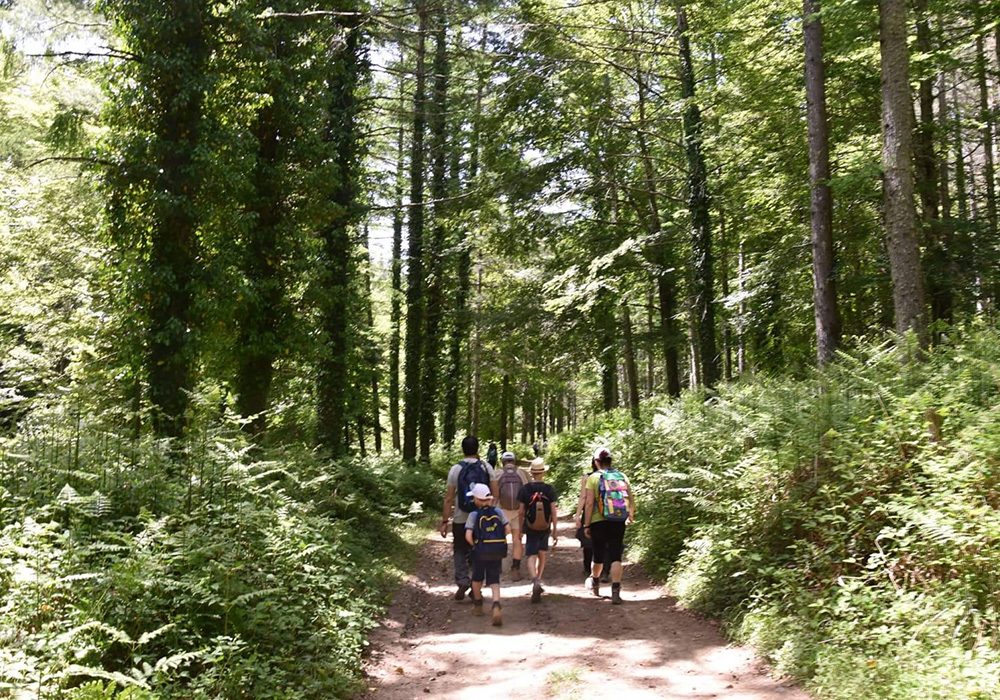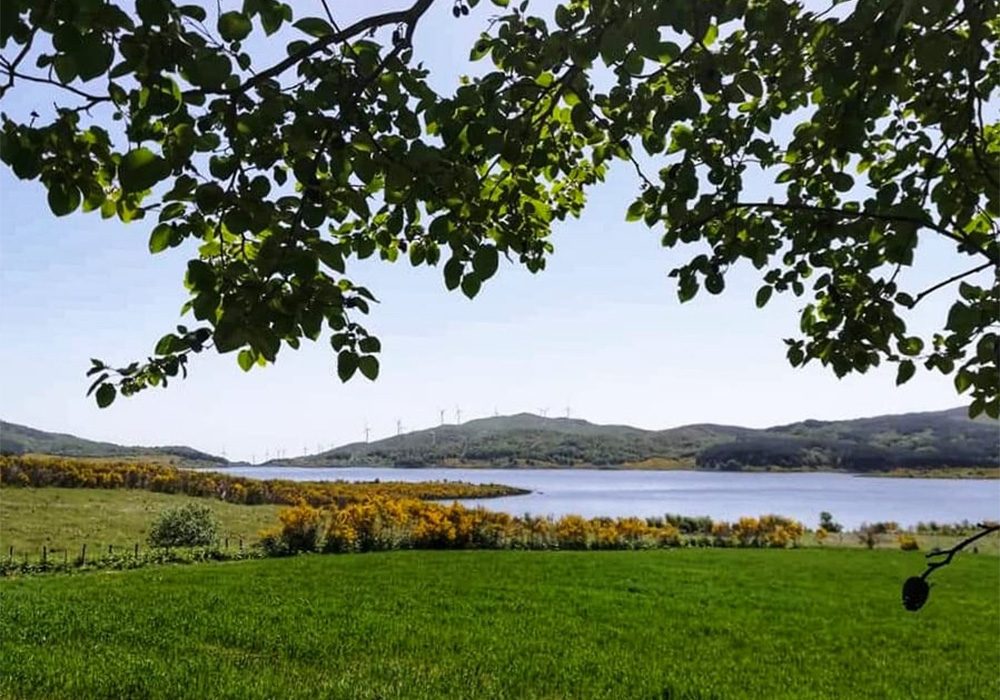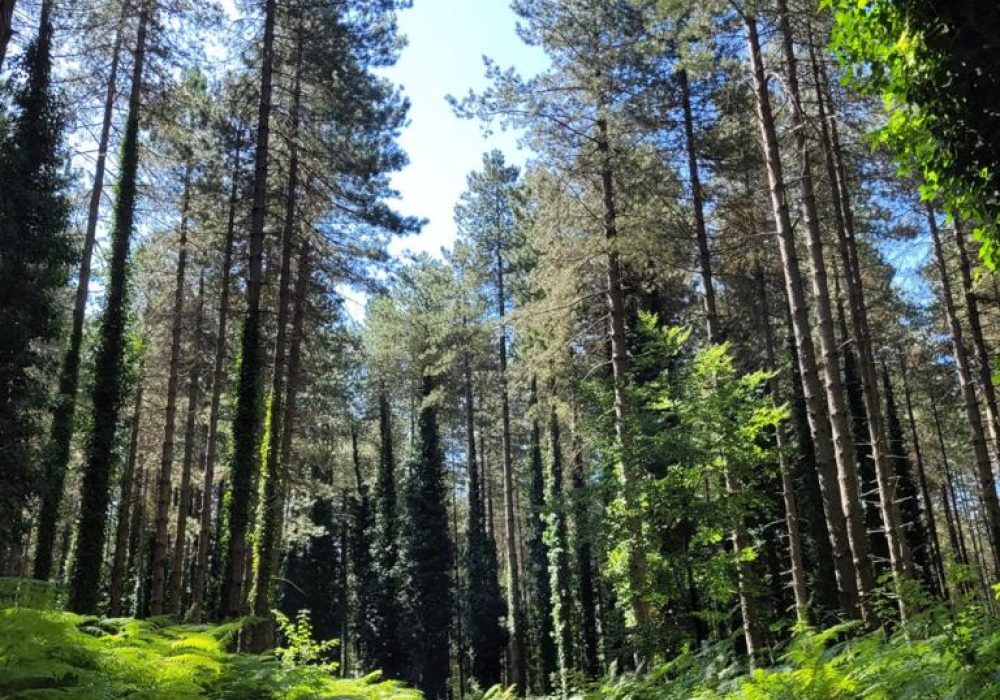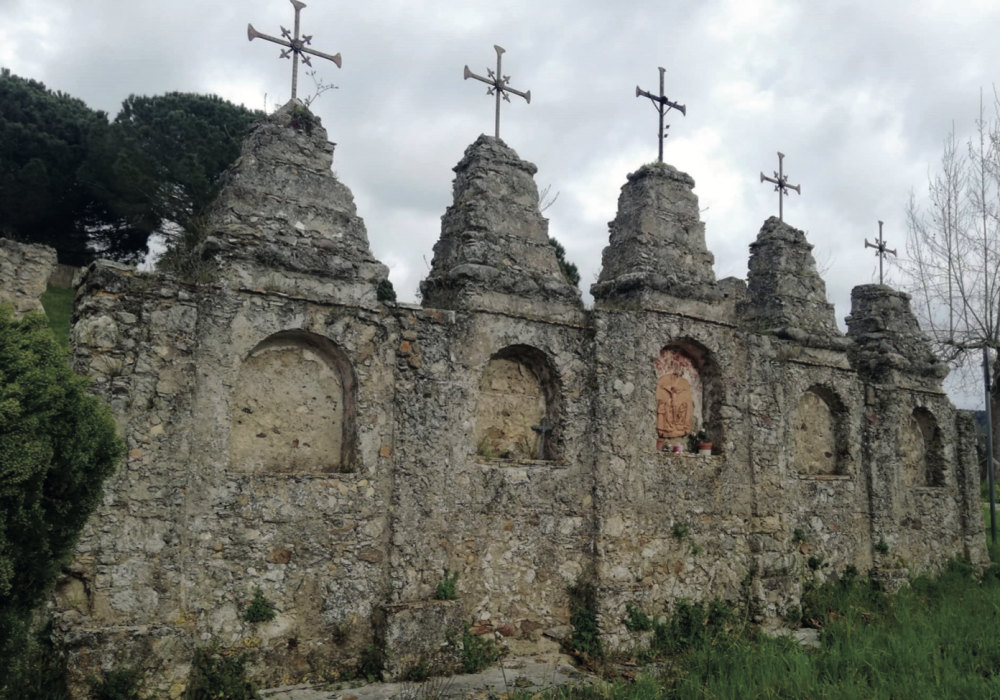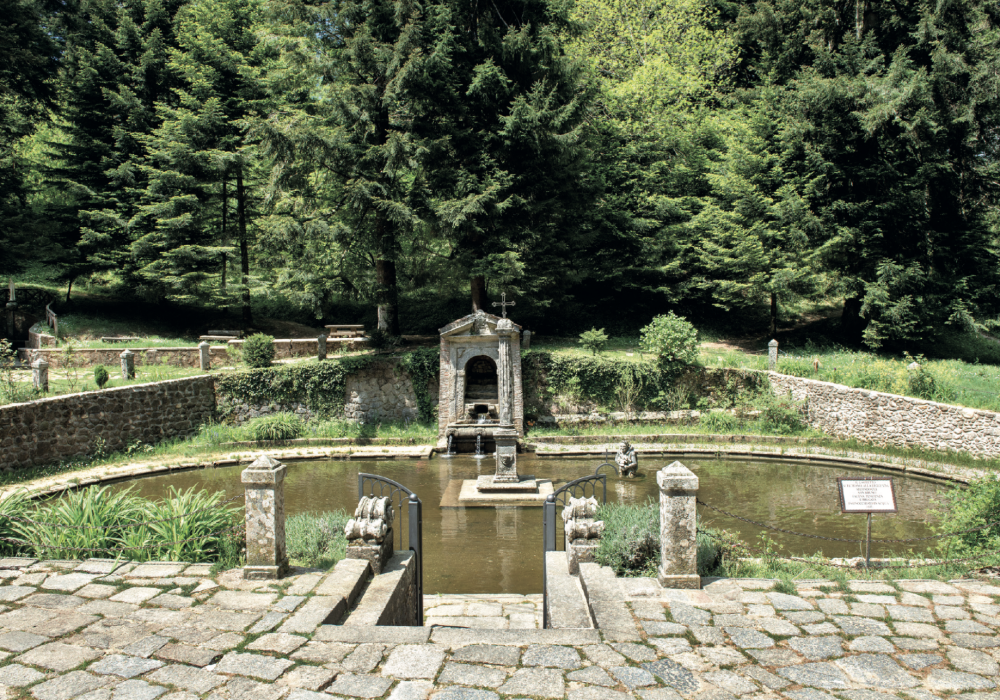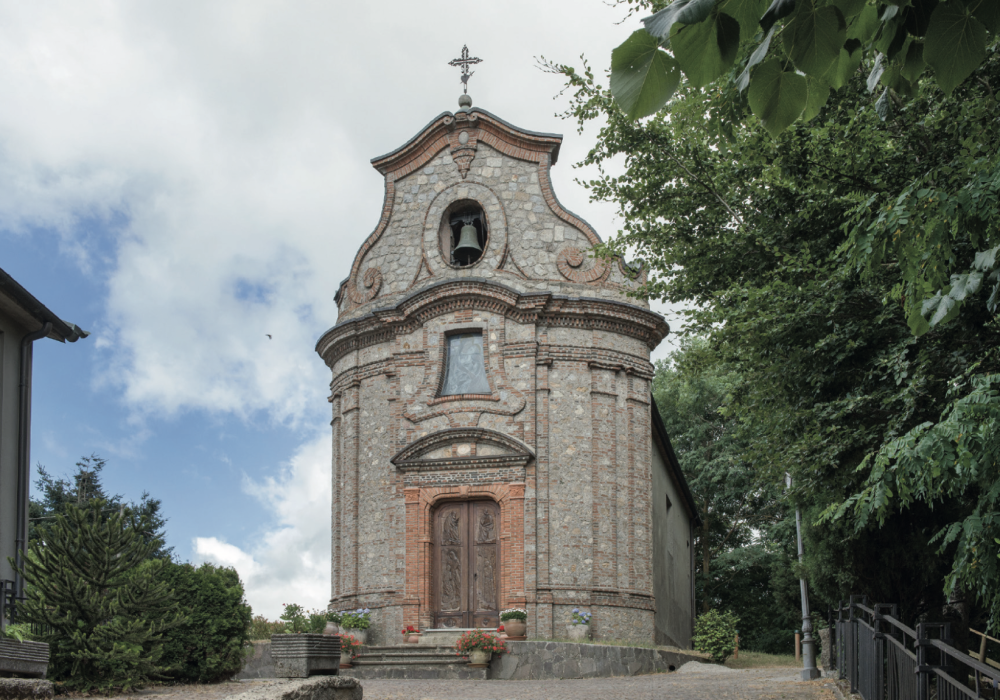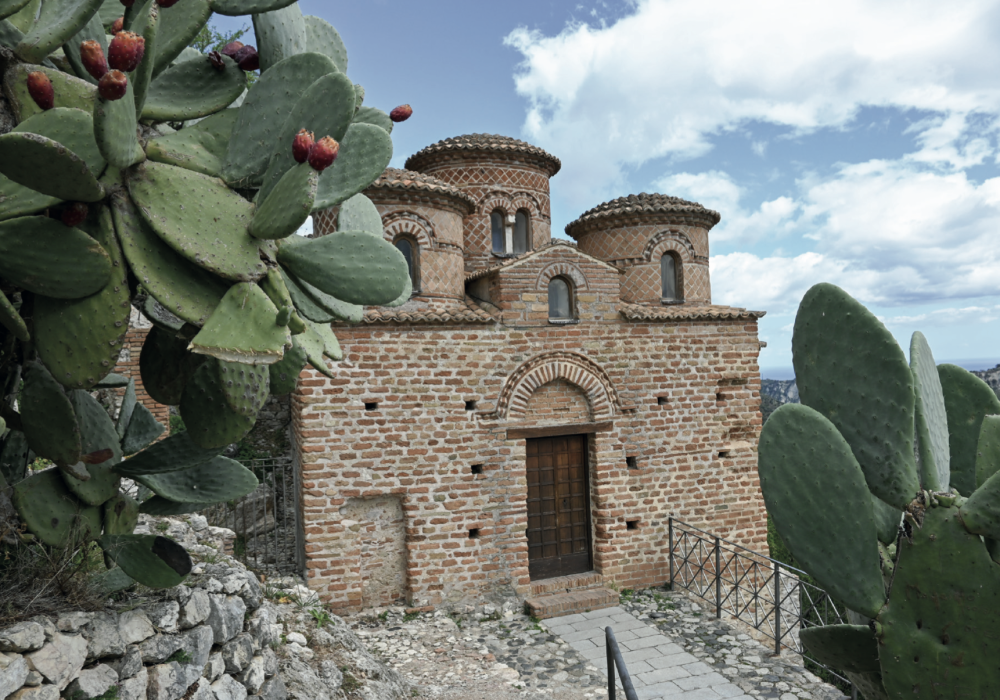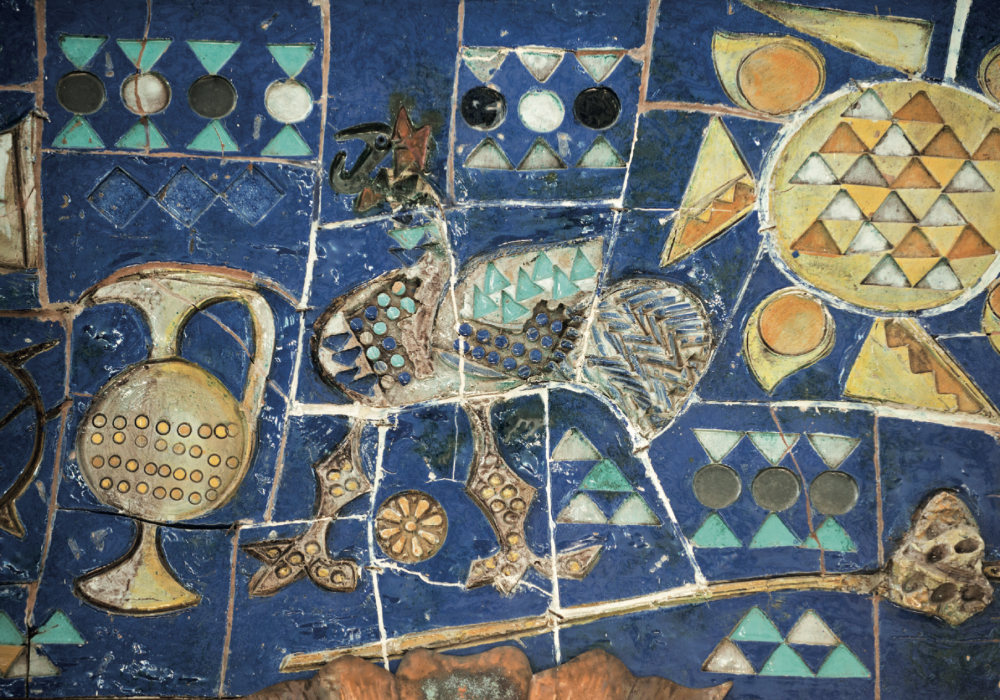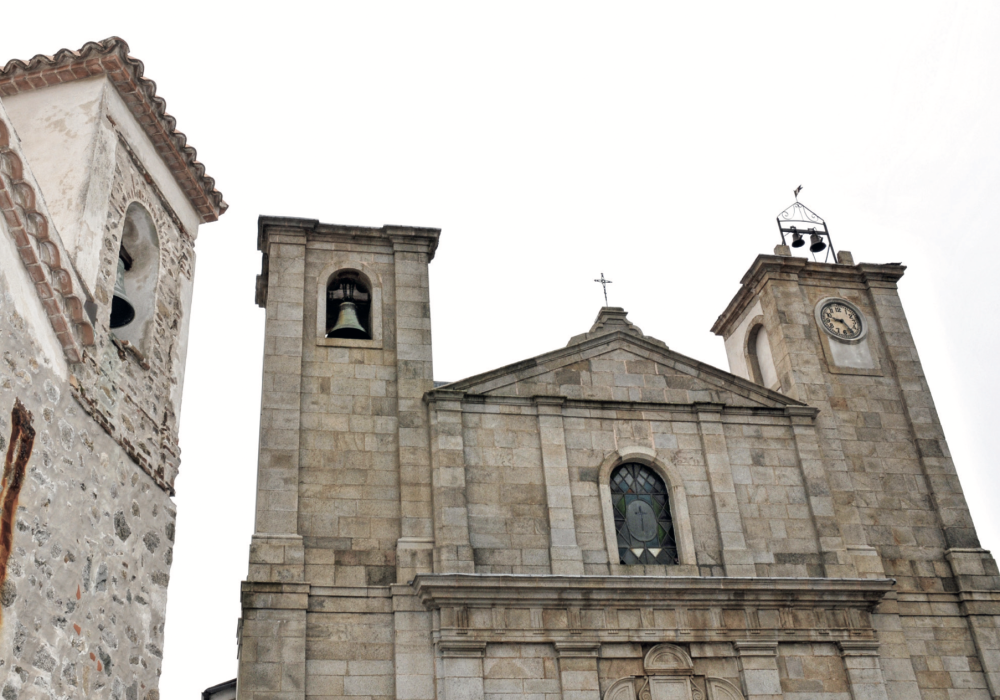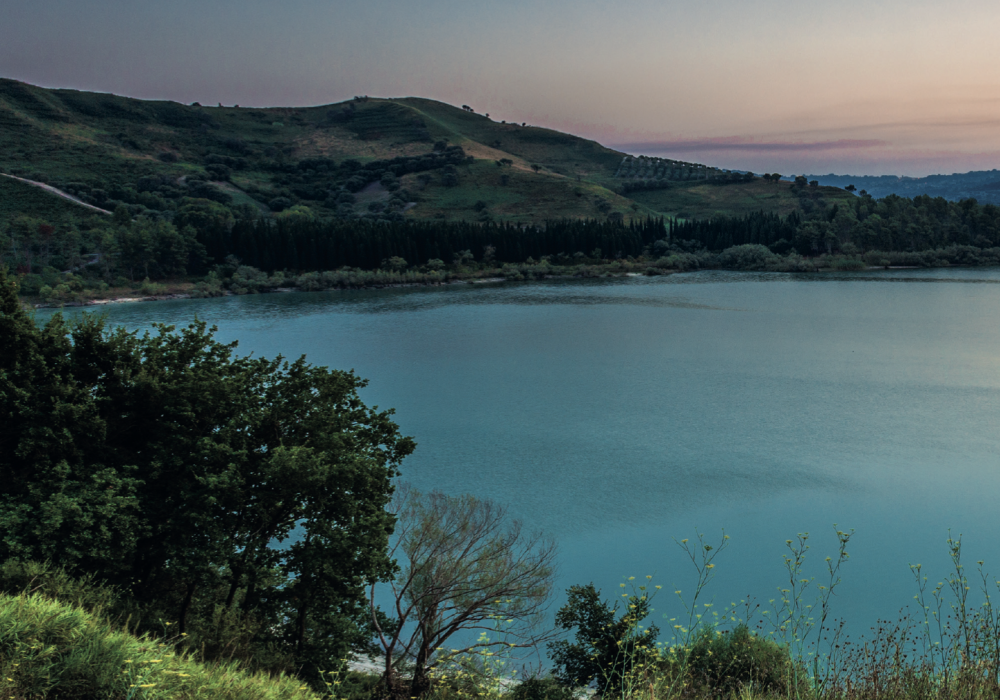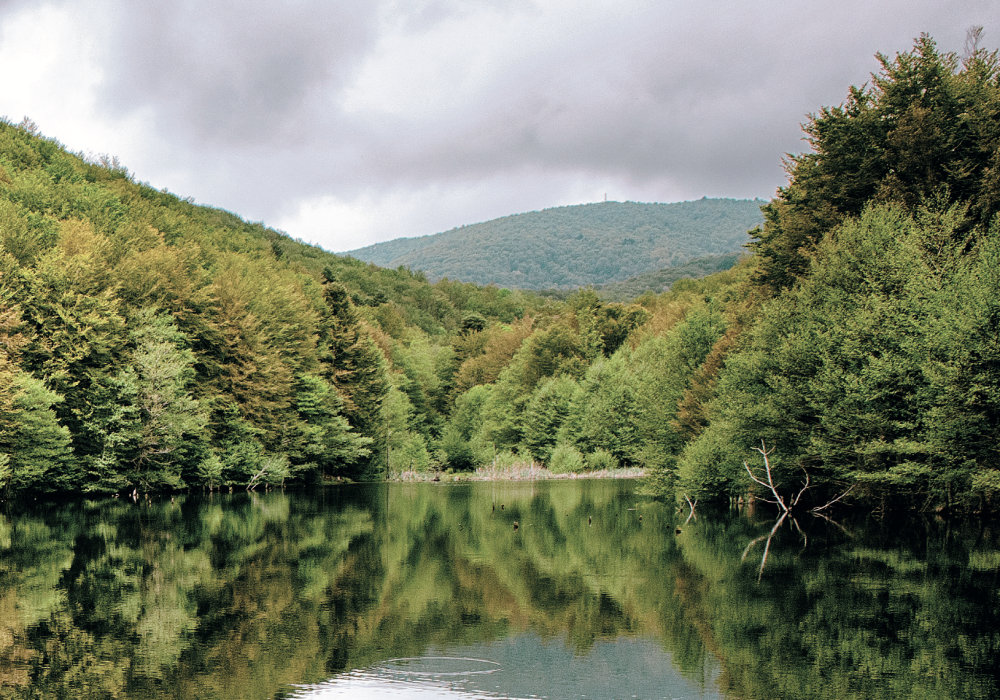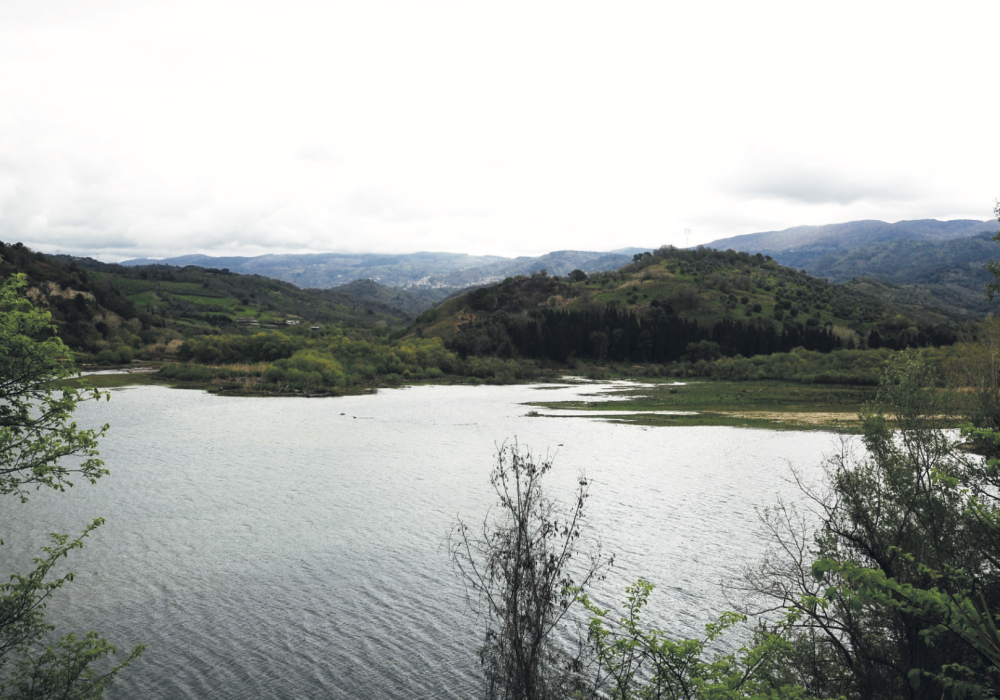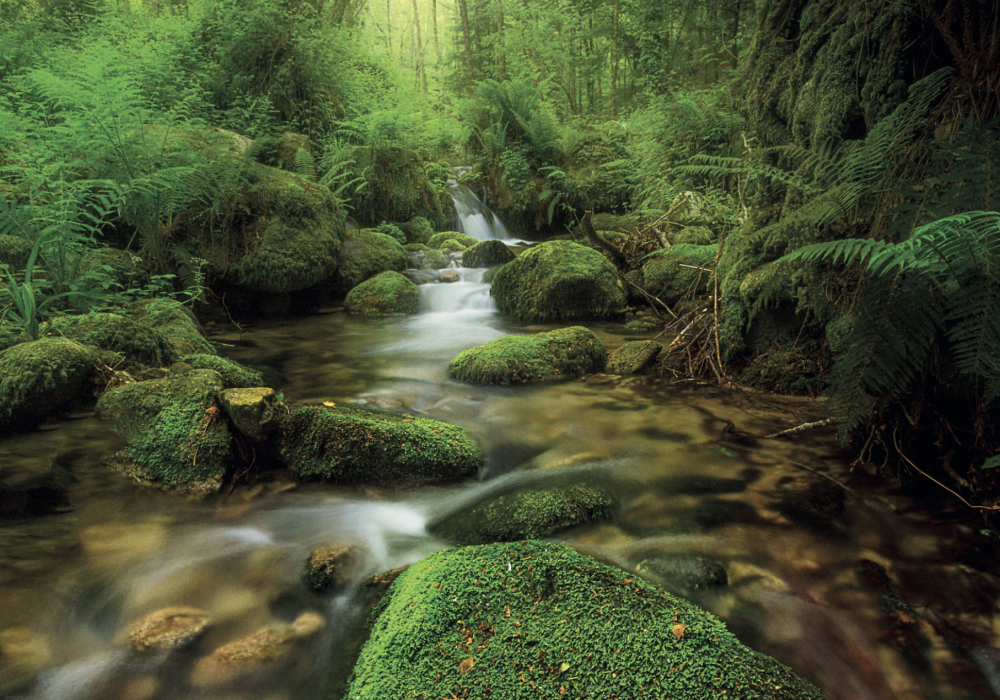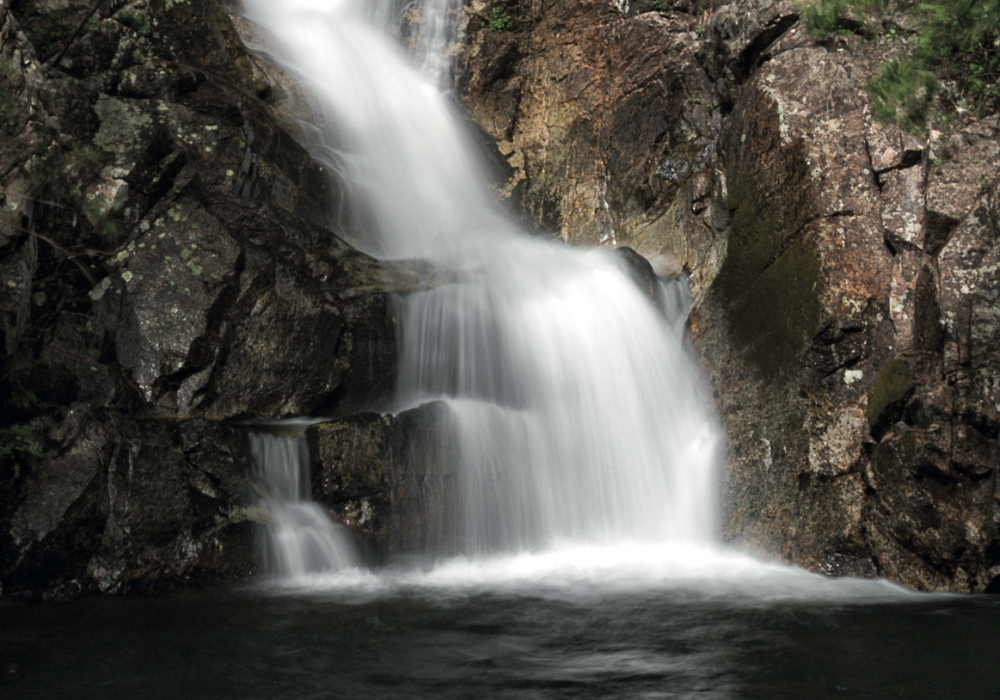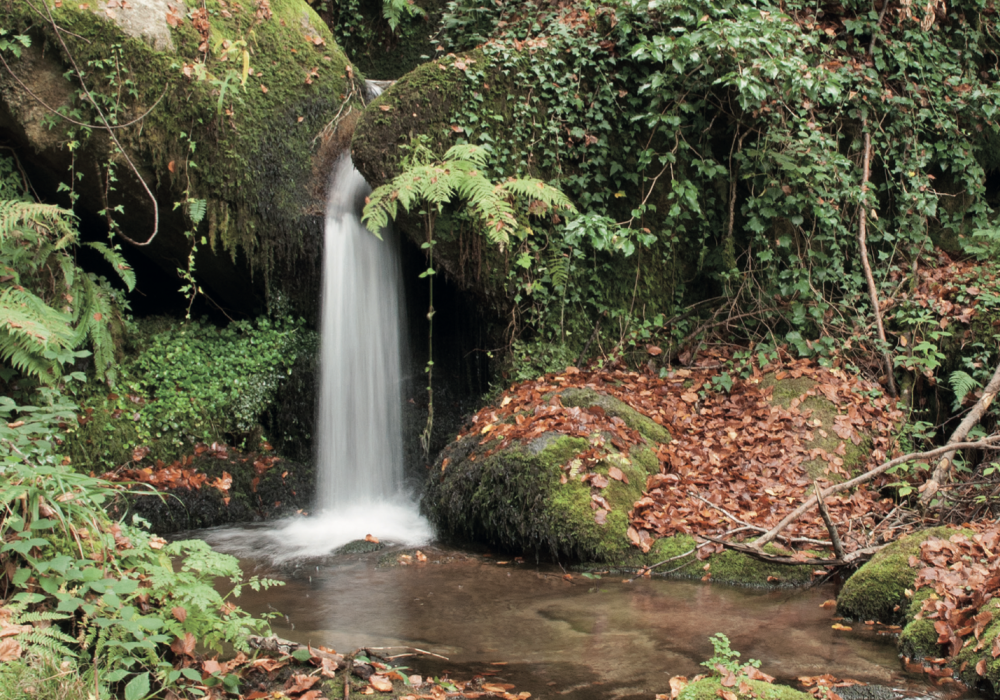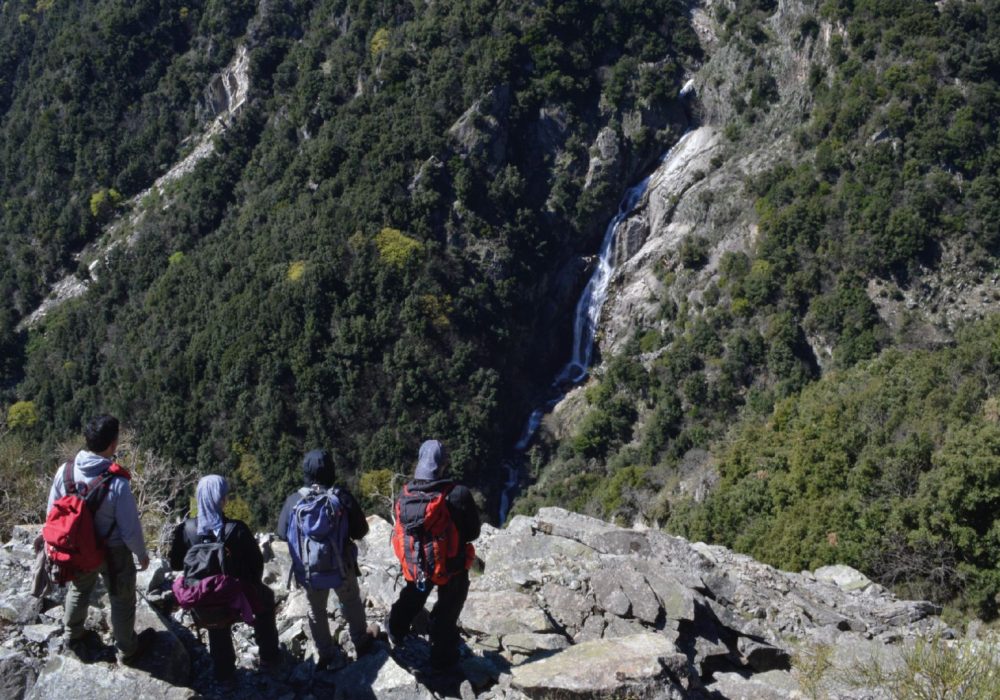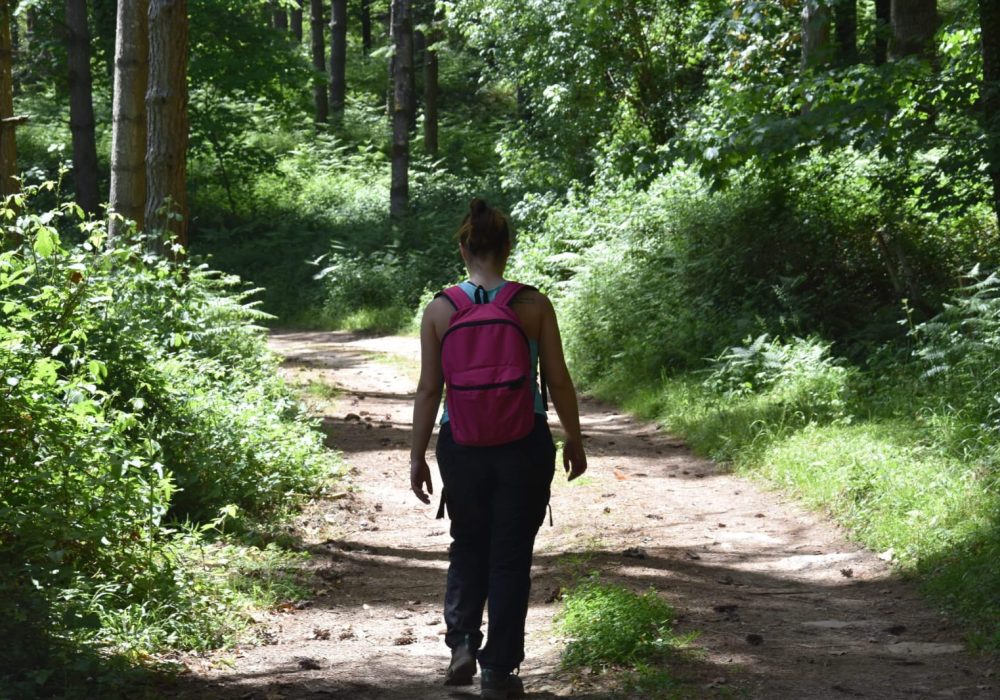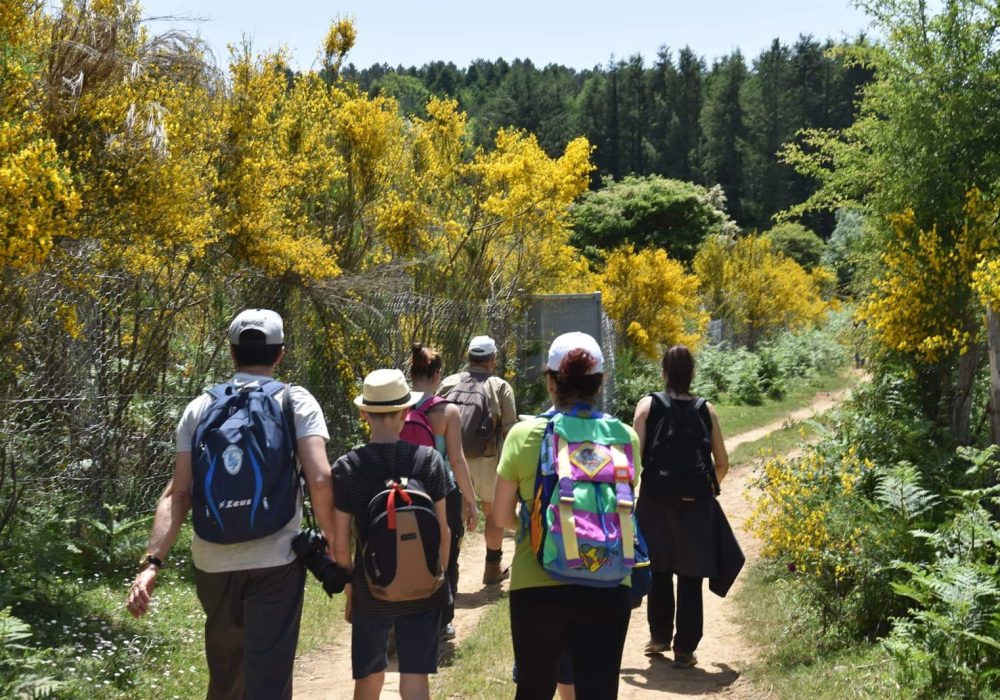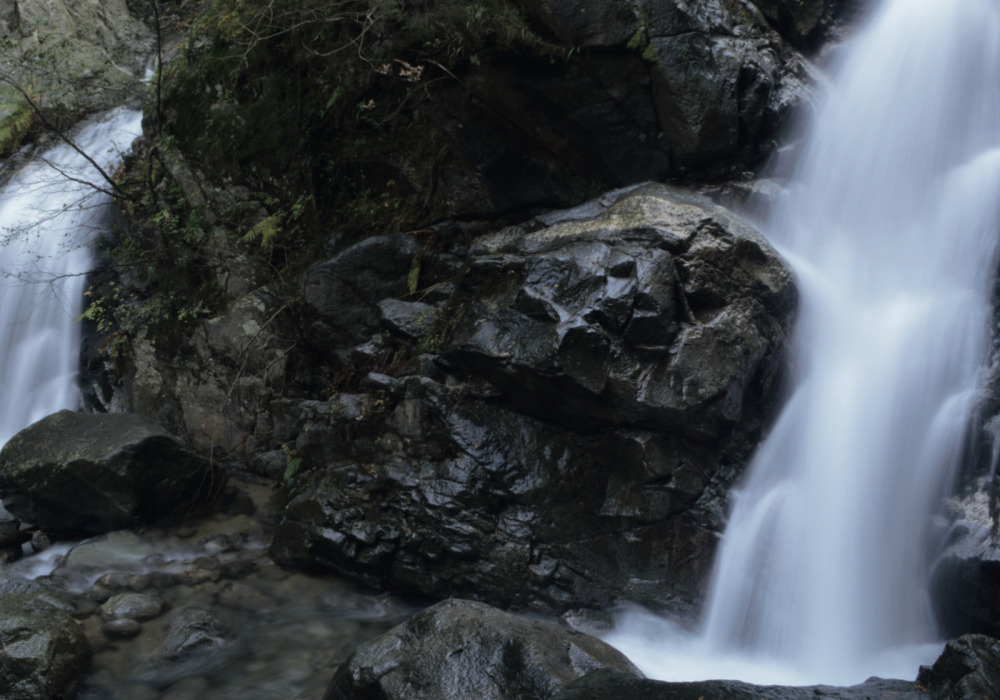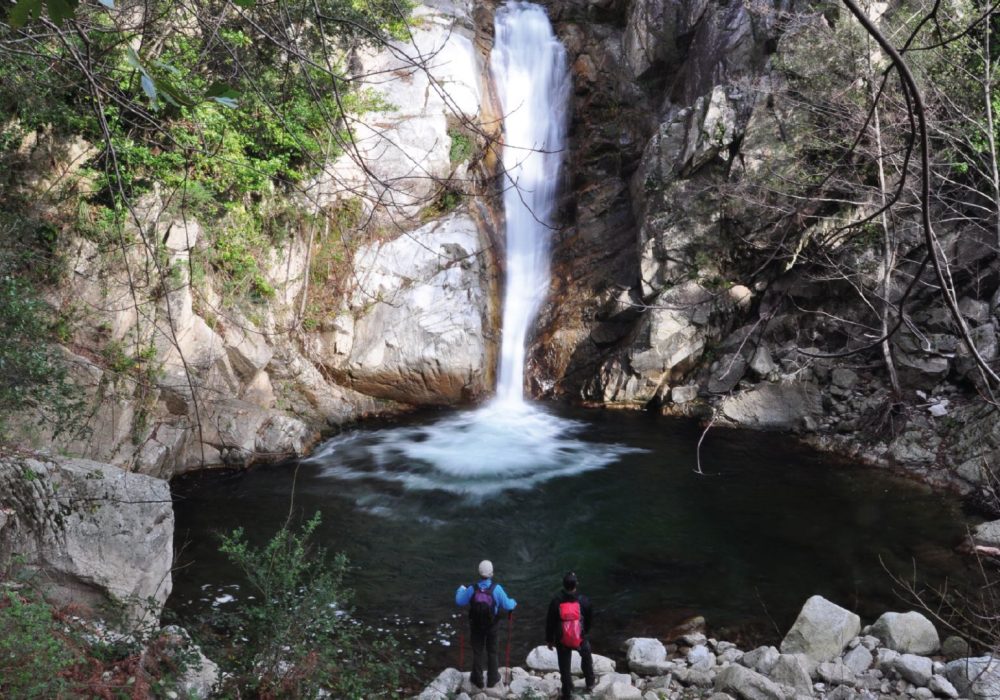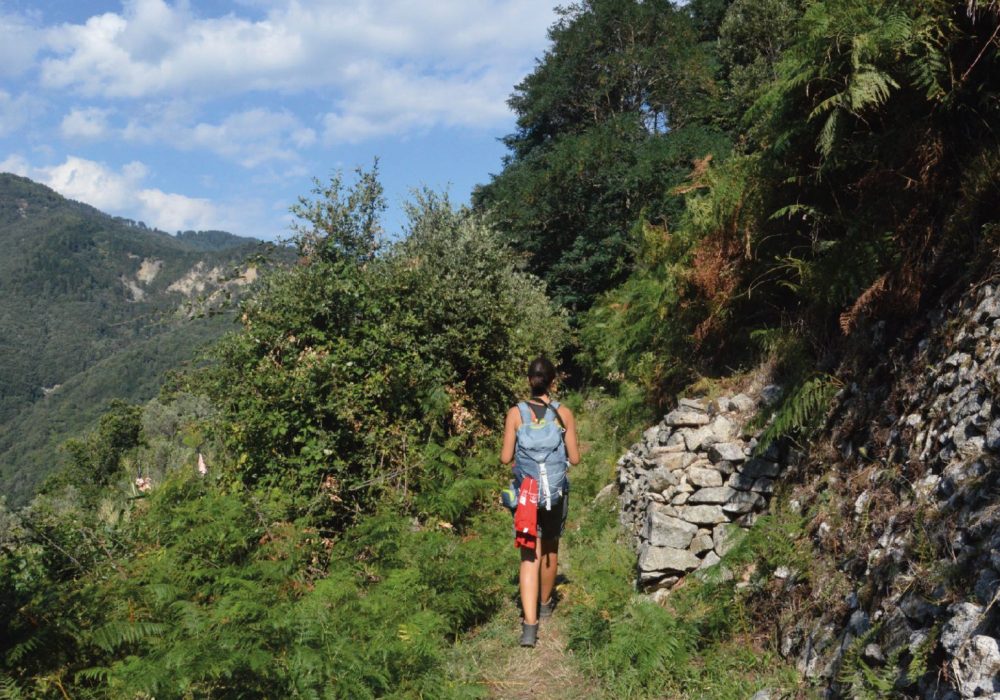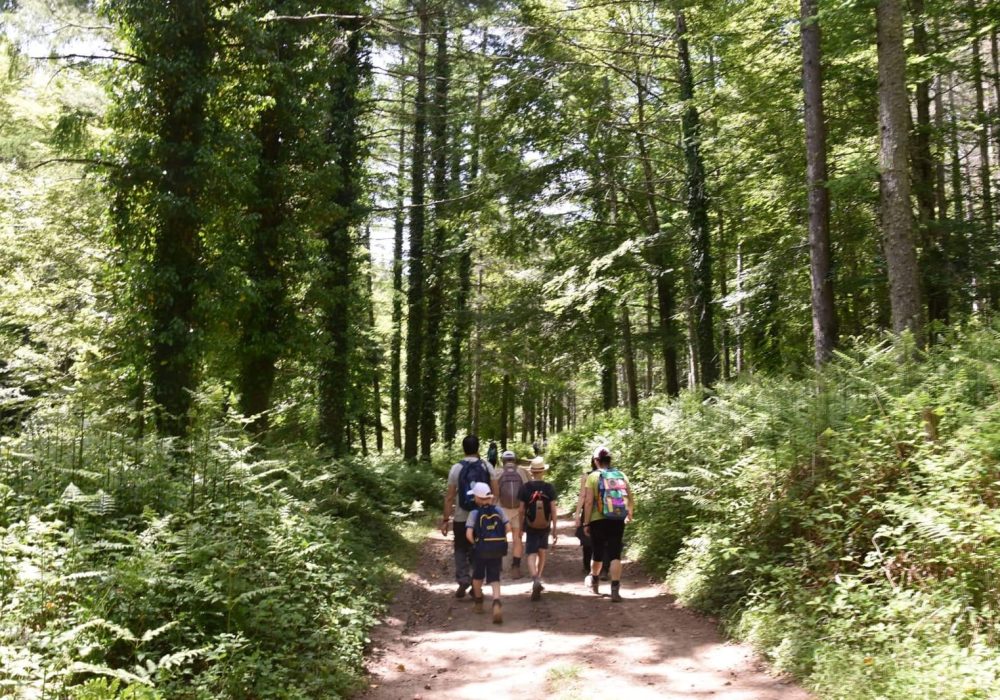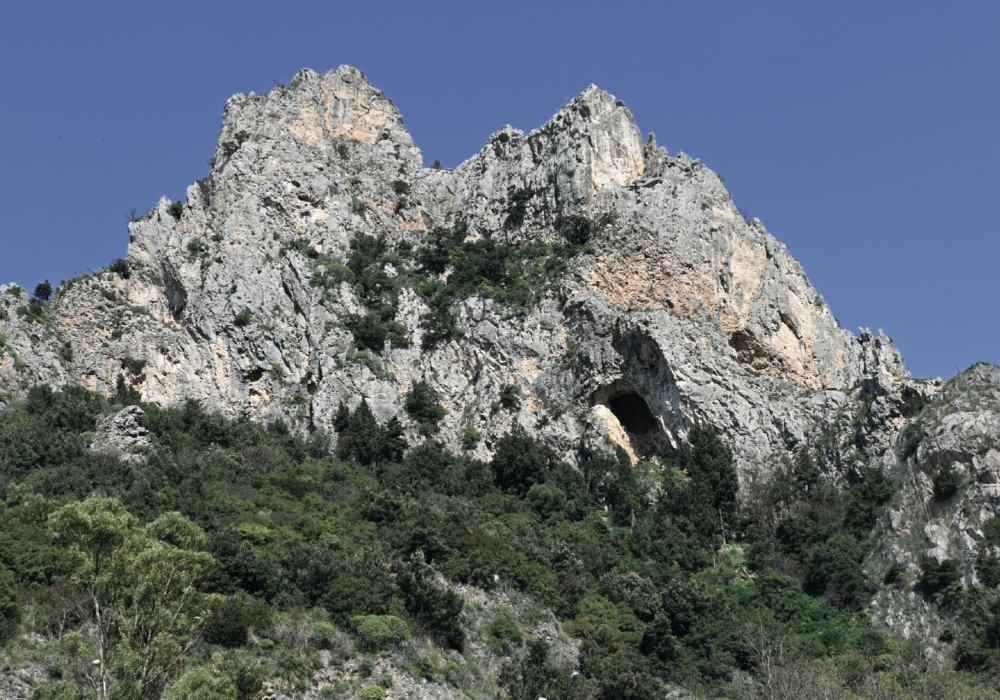Anello-Bellavista Trail
We visit one of the most beautiful natural sites in the Serre, a Biogenetic Nature Reserve since 1977, the protected area of Marchesale, which is part of the municipalities of Arena and Acquaro and included in the European Network of Biogenetic Reserves.
Trail Info
MUNICIPALITIES: Acquaro (VV)
START: Località Gallone-Fanelli, Piani di Acquaro (VV)
END: Località Gallone-Fanelli, Piani di Acquaro (VV)
TIME: circa 5 h e 30 min
DISTANCE: 9 Km
DIFFERENCE IN ALTITUDE: 316 m
MAXIMUM QUOTE: 1.149 m
MINIMUM QUOTE: 832 m
DIFFICULTY: medium
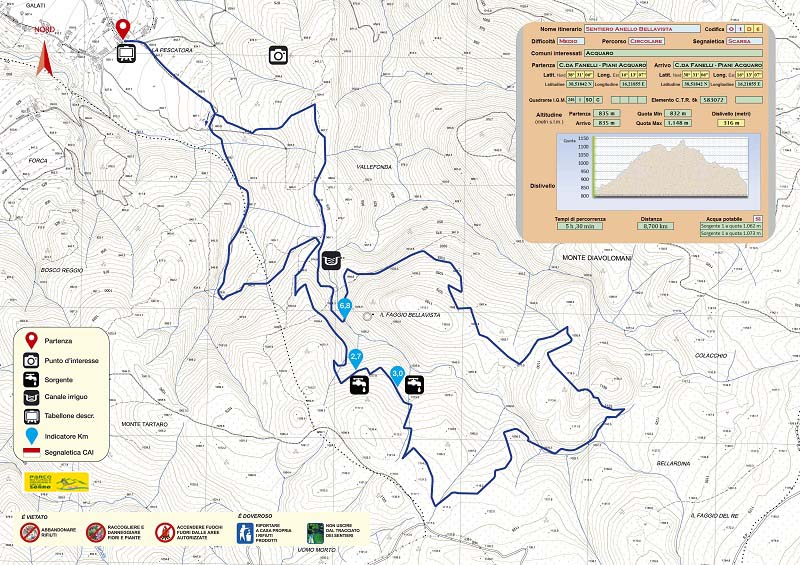
Description
A circular, easy route on a dirt road for most of the way and with a discontinuous slope that will take us to visit a site of great charm and reknowned as a SIC (Site of Community Importance). The itinerary has as its backdrop an exceptional setting: the Marchesale Biogenetic Nature Reserve, which plays an important role as a natural corridor and in preserving the native ecotypes of this area. It starts from the locality of Gallone-Fanelli di Piani di Acquaro, which can be reached from the A3 SA/RC motorway with the Serre exit, proceeding along the SP 4 towards Acquaro-Dinami or from the locality of Boscoreggio, in the municipality of Dinami, from the SP 9.
Alternatively, from Provincial Road SP 58 for Arena, at the height of the ruins of the Norman aqueduct, passing under its arches, we take the small road between the two, heading towards the locality of Bove, characterised by the presence of scattered houses. We continue towards the mountain and arrive at the dirt road that, after passing the picnic area and the ‘Speranza’ forestry barracks, will take us to the locality of Gallone. At the point where the dirt road, at a bend, meets the municipal road, we will find a small road, again with a natural surface, lined with alders. We leave the car there. We proceed uphill, plunging into woods in which the beech tree shows itself in all its beauty. At the first crossroads, we turn right, leaving the road closed by a bar on the left. Arriving at a stream, the path continues alongside it and then climbs up again. At the next two junctions, we keep to the left, following the small road through the woods. When we reach the intersection with a wide beaten earth track (at the intersection of the irrigation canal) we turn right, beginning an uphill stretch. The entire route is marked by CAI signs and we will find a fountain at which to quench our thirst. Shortly before the arrival, at the end of the dirt track, we will encounter a widening, we continue to the left, beginning a stretch among the trees that descends towards a stream. The stream is easy to cross. On the other side begins a picturesque stretch of about 400 m, which runs alongside the irrigation channel characterised by granite formations. Our walk will take us back to the track we took previously, which, this time, we will follow to the right and at the next crossroads on the left will lead us back to our starting point.

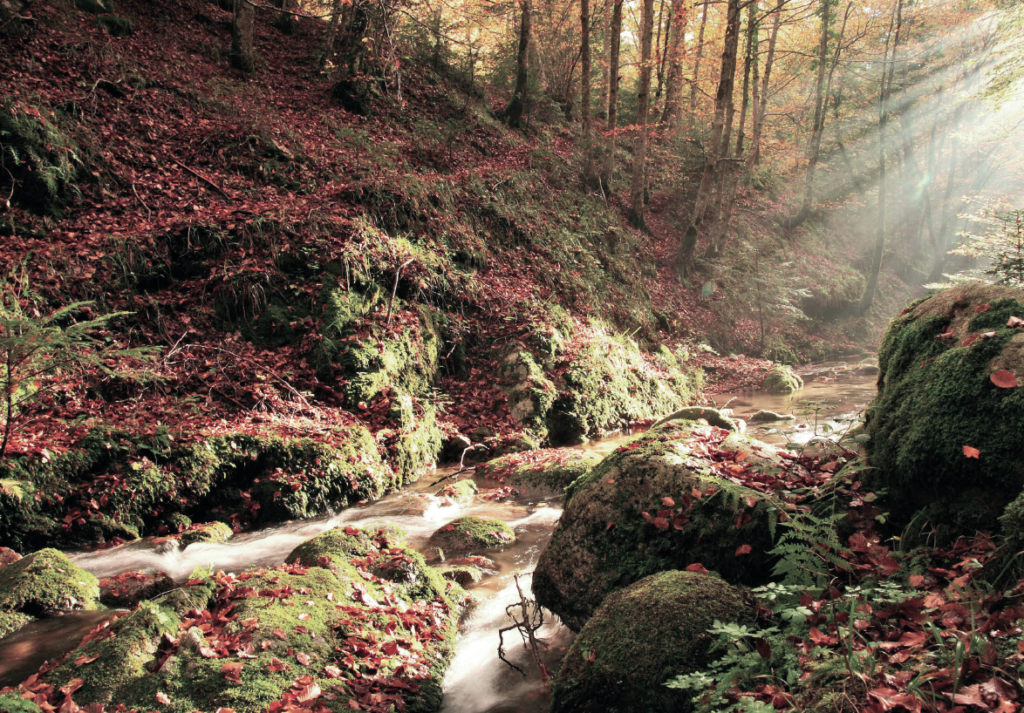
PIANI DI ACQUARO
Piani di Acquaro is a place of evocative natural beauty with its gentle slopes rich in springs and often cultivated fallow land, with woods rising from the mountain slopes inland. Before setting off on our walk, let us pause to contemplate an enchanting view that brings together in a palette of colours the many aspects of this land. The view will allow us to sweep over the valley from the Gioia Tauro plain to that of Lamezia Terme.
ITALIAN HARE
Glades and pastures at the edge of woods are the ideal habitat for this species. Here the Italic hare finds shelter in small depressions it digs in the ground between the tall grass near rocks and bushes. This elusive little animal feeds on leaves, shoots, roots, fruit, mushrooms, twigs and bark. Active mainly at dusk and at night, during the day it remains hidden in the vegetation. It is a fast runner that can reach up to 70 km per hour.
EUROPEAN RATE
A relict belonging to the ancient Tertiary flora, the yew requires a special form of protection due to its very slow growth. It appears as a shrub or small evergreen tree with a smooth trunk, normally short and conical, red-brown in colour while the crown is dark green, often pyramidal. The yew has been known since time immemorial as a poisonous plant and is therefore referred to as the ‘tree of death’; the toxic principle, taxin, is contained in all its parts except the pulp of the aril. Yew wood has excellent elasticity and has been used for the construction of the longbow, a weapon that has played an important role in military history. In any case, supporters or detractors of such energy will not be able to remain indifferent in the face of the impressive advancement of this technology.
AGRIFOGLIO
As soon as we leave the small road between farms and enter the forest, we can observe various hollyhocks together with butcher’s broom, which, in large concentrations, covers large areas of sloping ground among the trees. Everyone knows this plant because with its beautiful red berries it is one of the symbols of Christmas, but already in antiquity it was associated with magical powers: it was said to protect against demons and bring good luck. There are around 400 species in various shades of berries and leaves. It occurs as a tree or more frequently as a shrub. Today, holly is rarely used in herbal medicine due to its toxicity.
BEECH TREES
The beech (Fagus sylvatica) is a large tree that can reach 40 metres in optimal vegetative conditions. It is specimens like these that will rise majestically around us along the path we walk. A combination of the silvery-grey patches of the trunks and the vibrant, transparent green of the leaves. Beech wood, homogenous and heavy, lacking in elasticity but resistant to bending, twisting and knocks was once used for railway sleepers, for many musical instruments and, before the advent of paper, in the form of writing tablets. In folk medicine, the bark decoction was used in cases of fever, while charcoal and ash were used to make ointments for inflammation.
